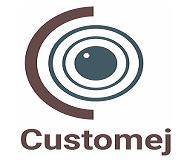In the realm of home healthcare, ensuring comfort and safety for loved ones is paramount. For those with mobility challenges, medical lifts offer a vital solution to enhance independence and ease of movement within the home. Proper installation of these devices is crucial to maximize their benefits and ensure reliable performance. Here’s a guide to optimizing home healthcare through thoughtful and effective medical lift installation.
Understanding Medical Lifts
Medical lifts, often referred to as patient lifts or medical patient lifts, are essential tools for assisting individuals with limited mobility. These devices help caregivers transfer patients safely from one location to another—such as from a bed to a wheelchair or from a chair to the bathroom. They come in various types, including ceiling lifts, floor lifts, and sit-to-stand lifts, each designed to address specific needs and scenarios.
Why Medical Lift Installation Matters
The effectiveness of a medical lift heavily relies on its installation. A well-installed lift ensures stability, safety, and ease of use. Conversely, improper installation can lead to malfunctions, accidents, and increased strain on caregivers. Thus, medical lift installation should be approached with precision and care to optimize its functionality and longevity.
Steps for a Successful Medical Lift Installation
- Assessing the Needs
Before installation, evaluate the specific needs of the individual who will be using the lift. Consider factors such as their mobility level, the layout of the home, and the weight capacity required for the lift. This assessment will guide you in selecting the most appropriate type of lift and determine the optimal installation location.
- Selecting the Right Equipment
Based on the assessment, choose a medical lift that suits the requirements. For instance, ceiling lifts are ideal for homes with limited floor space, while floor lifts are versatile and can be moved from room to room. Ensure the lift you select has the necessary features, such as adjustable height, appropriate weight capacity, and user-friendly controls.
- Preparing the Installation Area
The installation area must be prepared to accommodate the lift. For ceiling lifts, this involves ensuring that the ceiling structure is strong enough to support the lift and that there is adequate clearance. For floor lifts, ensure the floor surface is even and free of obstacles. Clear the area of any clutter and ensure there is sufficient space for the lift’s operation.
- Professional Installation
While some medical lifts come with DIY installation instructions, professional installation is often the best choice. Certified installers have the expertise to handle the complexities of medical lift installation and can ensure that all safety protocols are followed. They will also test the lift thoroughly to confirm that it operates smoothly and meets all safety standards.
- Training and Usage
Once installed, proper training is essential for both caregivers and users. Understand how to operate the lift safely and effectively, including how to attach and detach slings, adjust settings, and perform routine maintenance. Many manufacturers offer training sessions or instructional materials to ensure everyone involved is well-informed.
- Regular Maintenance
To maintain optimal performance, regular maintenance of the medical lift is crucial. This includes checking for any signs of wear and tear, ensuring all moving parts are lubricated, and verifying that all safety features are functioning correctly. Follow the manufacturer’s maintenance guidelines and schedule periodic inspections by a professional.
Benefits of Proper Medical Lift Installation
Enhanced Safety: Proper installation reduces the risk of accidents and injuries, providing peace of mind for both users and caregivers.
Increased Efficiency: A well-installed lift operates smoothly, making transfers easier and faster, which is particularly beneficial in managing time and effort.
Longevity of Equipment: Correct installation and maintenance extend the lifespan of the lift, ensuring long-term reliability and functionality.
Improved Quality of Life: By optimizing the use of medical lifts, individuals with mobility challenges can experience greater independence and improved quality of life.
Conclusion
Installing a medical lift is a significant step toward enhancing home healthcare, and doing so with confidence requires careful planning and execution. From assessing needs and selecting the right equipment to professional installation and ongoing maintenance, each phase plays a critical role in ensuring the lift’s effectiveness and safety. By investing in proper medical lift installation, you not only safeguard the well-being of your loved ones but also support a more comfortable and accessible living environment.




